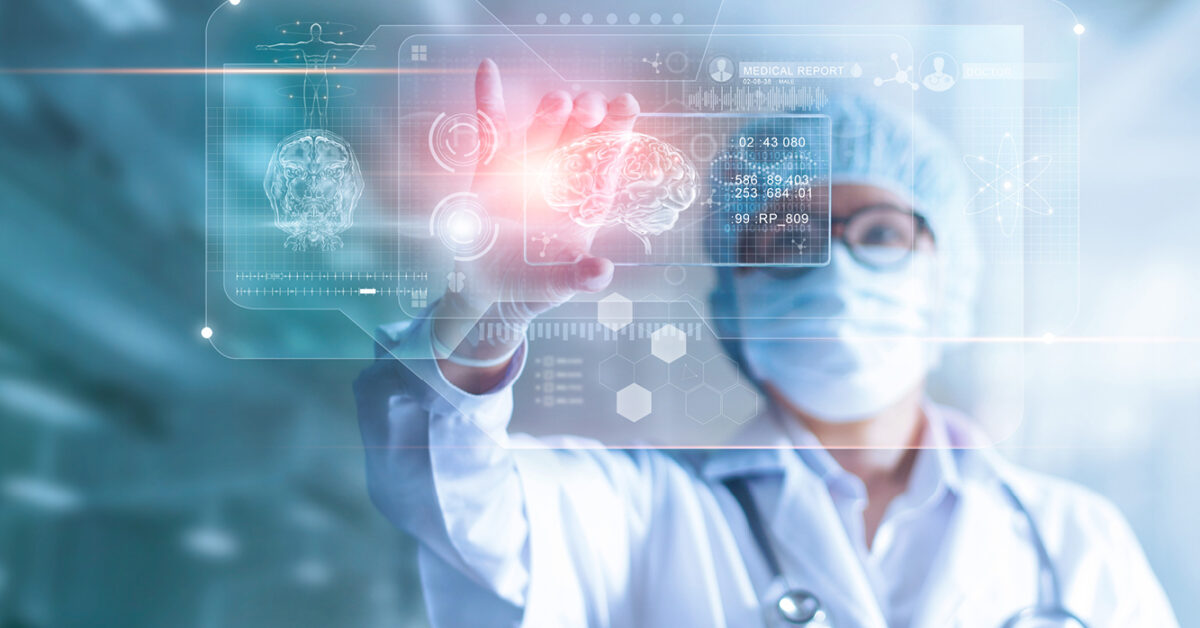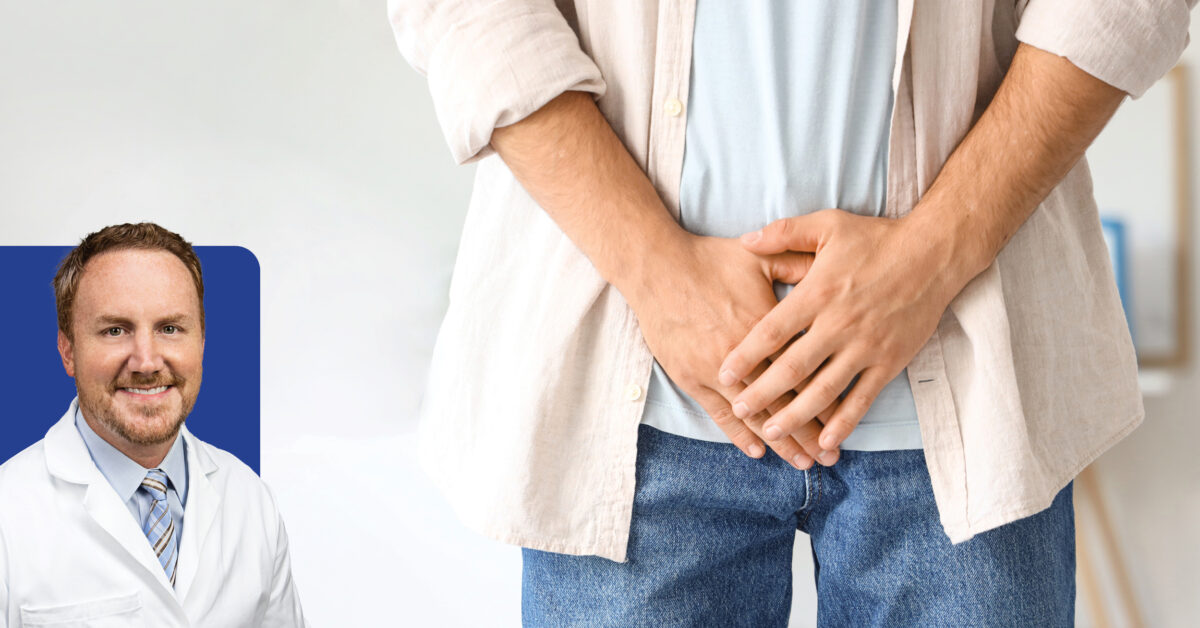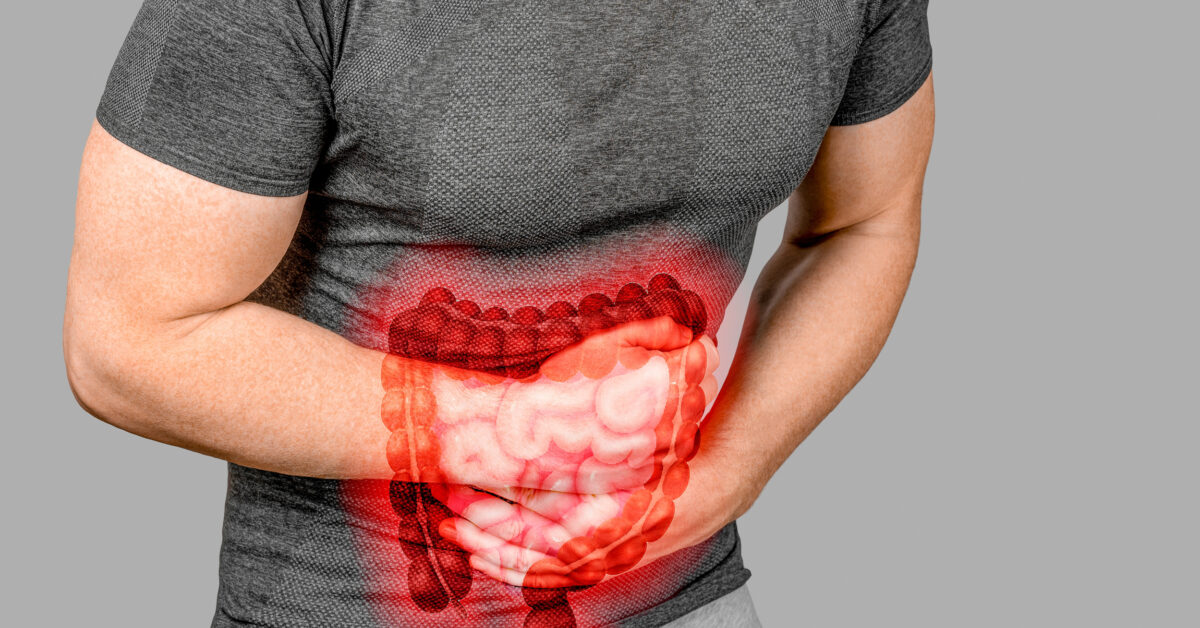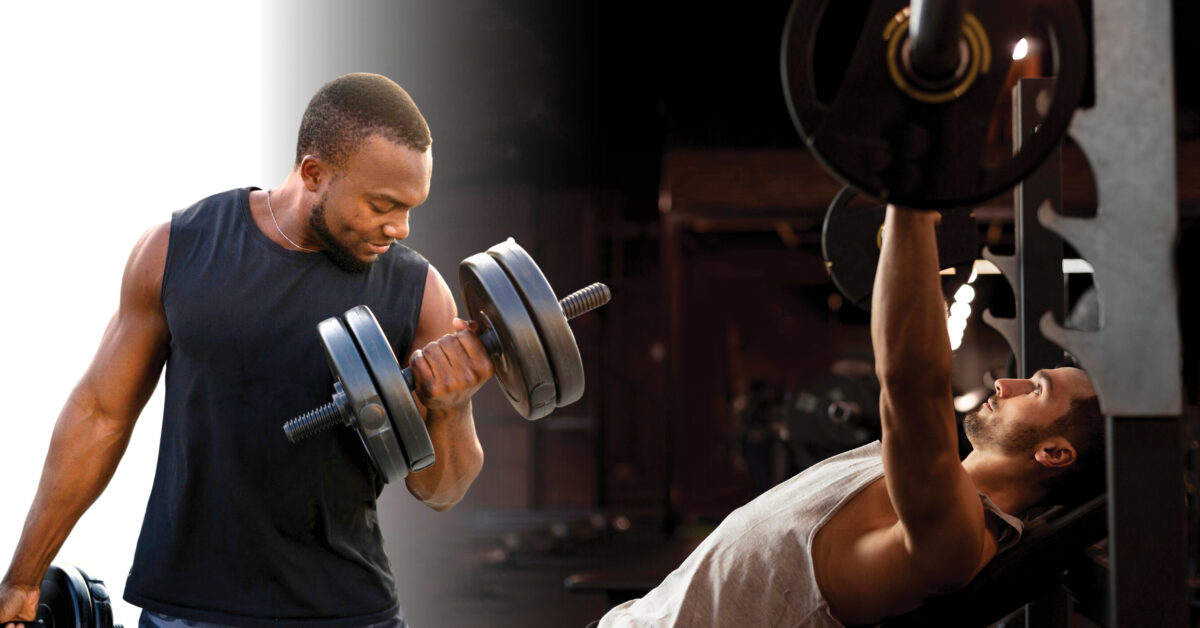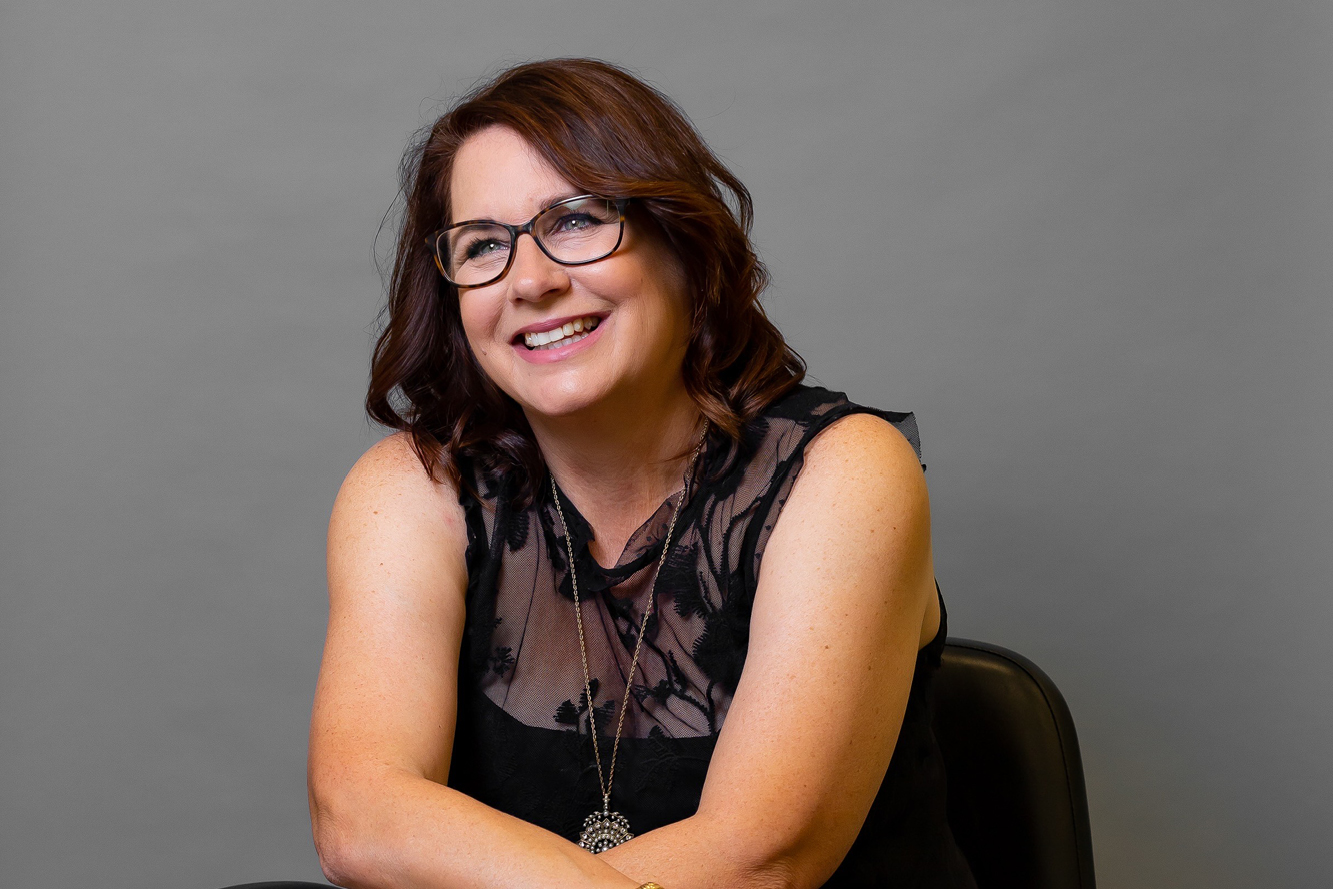
First Person with Melinda Tilley
January 2022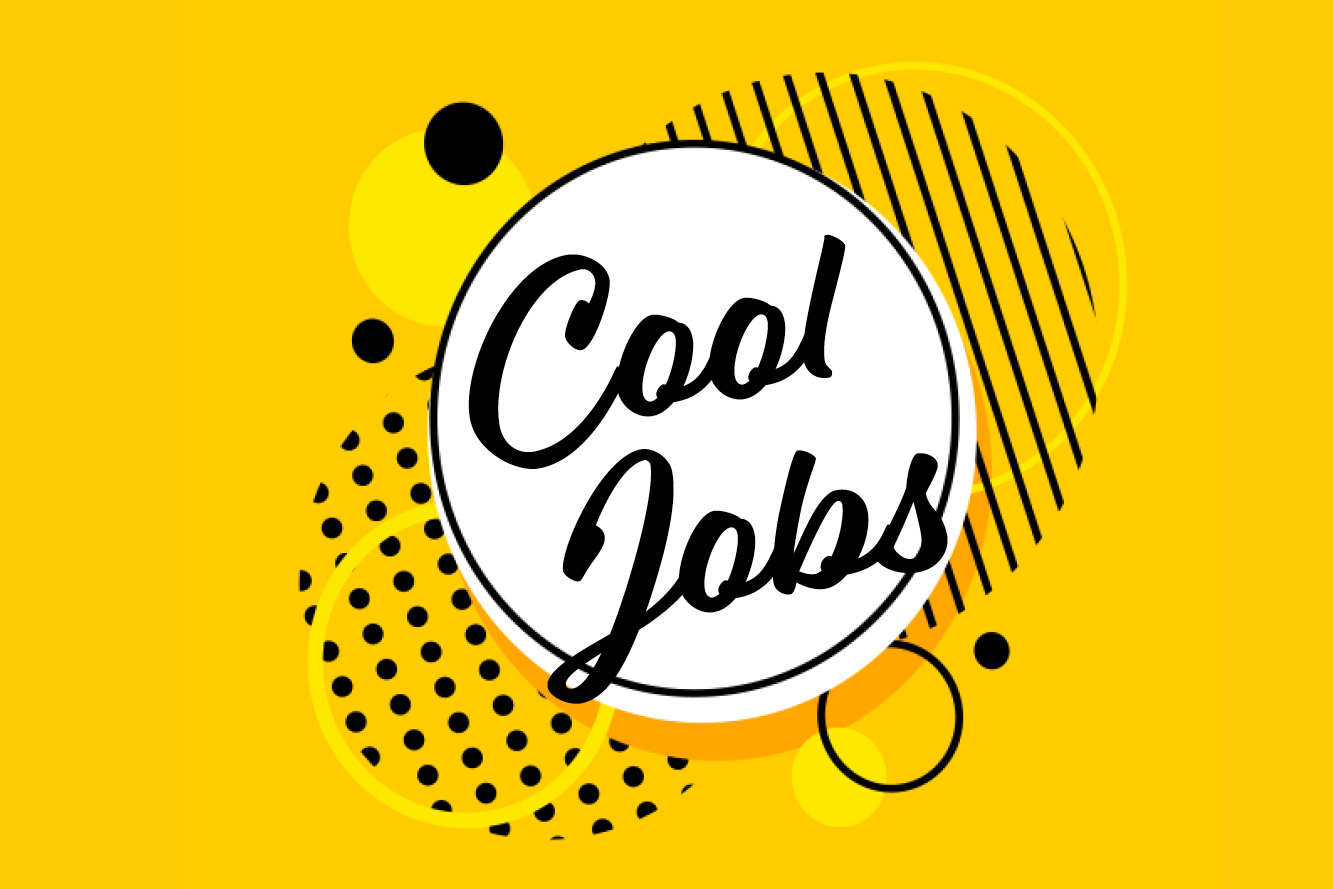
Cool Jobs
January 2022Medical science is an exciting industry, ever evolving and striving to learn, improve, and create new and better technology, techniques, and programs to better serve healthcare consumers. In this special section on Healthcare Innovations, we spotlight what’s new at healthcare facilities across Southwest Louisiana. You’ll find stories on surgical robotics, imaging technology, medical cannabis, mobility issues, an update on COVID-19, and more. Stay well!
Physical Therapists
Help Patients Recover from COVID-19
by Ashley Fontenot Hornsby
The research of the lasting effects COVID-19 can have on individuals who have been ravaged by the virus is still in the early stages of medical understanding. It will be years before the world truly comprehends the far-reaching effects that this virus has contributed to the physical and emotional impairments of those who have suffered from it. What the scientific community does know is that for many, the symptoms of the virus persist long after their diagnosis was initially made.
When an individual has ongoing or new symptoms, or symptoms that persist for more than four weeks from their initial onset, it is known as long or chronic COVID-19. It’s estimated that at least 10% of those infected will suffer long-term symptoms from the virus. Long COVID-19 means that an individual has not returned to his/her prior state of health. Some of the known long-term effects of COVID-19 include:
Fatigue or weakness
Body aches
Shortness of breath
Difficulty concentrating
Poor endurance
Difficulty sleeping
Rapid heartbeat or palpitations
Anxiety, depression, or mood changes
Muscle or joint pain
Physical recovery from the effects of the virus is a crucial step for an individual to return to his/her prior level of health. To begin any rehabilitation program, one must get clearance from the medical team. If the medical team deems it safe to begin a rehabilitation program, it’s time to begin improving respiratory function, including strength of the breathing muscles, along with general muscle strength and endurance.
If the respiratory system has been affected from the illness, likely a patient has already been given an incentive spirometer – a device that encourages deep breathing to strengthen the diaphragm and respiratory muscles and open up airspaces in the lungs. This is something a patient can do at home, typically 15 minutes a day broken down into three to five minutes sessions throughout the day.
One of the biggest issues that individuals experience during their illness is the decreased ability to maintain oxygen saturation levels, especially with activity. Using a pulse oximeter to detect any decreases in oxygen saturation levels or changes in heart rate, will allow for safe participation in a rehabilitation program. Normal oxygen levels are 96-100%. It is important that it never goes below 88% during exercise. If it does get to 88%, the patient should stop and rest. Logging levels in a chart before, during, and after exercise helps track progress and alerts the medical provider to any abnormalities.
Physical recovery can begin with a few simple exercises that can be implemented to develop an effective strengthening and endurance program. Some of the activities that can be performed safely at home include: walking, sitting and standing from a chair, marching in place, wall push-ups, and walking sideways at a counter. As these activities become easier, a doctor can recommend physical therapy.
An important component in recovery from any illness is mental health. Communicating and participating in activities with family and friends, even if through phone calls and video chats, can help in a patient’s recovery. It’s common to go through bouts of depression or loneliness when going through an illness. Having a positive support system can lift spirits and brighten days, aiding in recovery.
The road to recovery can seem daunting, but with persistence and the right medical team managing your progress, patients can make strides each day to reach their goals.
Ashley Fontenot Hornsby is a physical therapist and co-owner at Thrive Physical Therapy. She is a graduate of McNeese State University and Texas Woman’s University. She specializes in the treatment of headaches, neck pain, and TMJ disorder, as well as orthopedics and sports rehabilitation.
Get Up & Get Movin’!
Early Mobility Program at Lake Charles Memorial Hospital
by Allie Livingston, Community Outreach Specialist at LCMH
Whether you have a day surgery procedure or a severe illness which led you to Lake Charles Memorial Hospital, you may have been seen by one of the expert physical therapists whose main goal is to get you up and moving as early as a couple of hours after surgery or the first day of hospitalization.
The multifaceted care team supporting you during your hospital stay, no matter the circumstances, is dedicated to embracing a collaborative and integrated approach to therapy with their Early Mobility Program. By encouraging every patient to move as much as possible, as soon as possible, patients get back to their everyday life faster and with better outcomes.
Imagine having the freedom to walk down the hallway, even while ventilated, surrounded by your care team. This whole-body approach addresses more than physical mobility; it helps promote a better state of mind and leads to a faster recovery. From sitting on the edge of the bed to taking your first steps after a total knee replacement, your mobility is of utmost importance to increase functionality and to reduce the risk of decline.
A collaborative effort between the nursing staff, therapists, and physicians brings this approach to life as soon as a patient is ready. For each patient, this may look different, but the physical therapy team at Lake Charles Memorial Hospital is ready to see patients and provide an individualized plan for each circumstance.
The physicians treating patients everyday play an essential role in sending orders in as they see fit to physical therapy. Ben Thompson, III, MD, pulmonologist and member of the medical staff at Lake Charles Memorial Health System, was instrumental in orchestrating this program across several departments and bringing it to life.
Dr. Thompson says he’s proud of the way many areas of the hospital cooperate to accomplish this program for the patients. “If you never let a patient get down, you don’t let their muscles get weak, they get better quicker,” he says.
Throughout the COVID-19 pandemic, physical therapists made it a priority to see patients in the COVID units, despite their own fears and facing unusual parameters. With limited space and isolation, it was essential for the patients’ mental and physical health to move around as their conditions allowed. Dedicated physical therapists would set aside time to see these patients. Although the approach was different, the goal remained the same: keep moving.
Depending on the circumstances, special equipment may be used to assist with walking or moving around. For example, a portable ventilator may be used to accompany the patient as they walk any length of space. This requires several staff members, including respiratory therapists, working together to monitor the patient and help move equipment. Lifts, canes, walkers, and special chairs may be used, as well.
As patients continue to recover, they may still require intensive inpatient rehab, or outpatient physical therapy. But the sooner patients get moving, the need for additional services decreases. Early mobility promotes independence, improves overall outcomes, and speeds up recovery.
Implementing an early mobility program requires extensive staff training and planning. It takes excellent communication across several departments to guarantee patient safety. Thanks to the experienced and skillful care team at Lake Charles Memorial, the program is expected to continue to grow and improve with new equipment and procedures. Early mobility is one of the top priorities and top of mind at Lake Charles Memorial Hospital.
Combined CT & Nuclear Medicine Technology
Available at West Calcasieu Cameron Hospital
by Christine Fisher
Bringing new technologies to life is the function of the new GE Nuclear Medicine SPECT/CT machine now at West Calcasieu Cameron Hospital, the only one of its kind in Southwest Louisiana.
“Most people probably wouldn’t expect to see this level of medical technology available at a smaller community hospital, but it highlights our commitment to providing advanced quality care to our community,” says Jake Richey, radiology director with West Calcasieu Cameron Hospital. “We’re able to now offer this to patients in our community, giving them a more accurate diagnosis, right here at home.”
This new technology combines traditional nuclear medicine with the clarity of a CT scan, giving physicians more accurate information of the patient’s anatomy which helps them give a more precise diagnosis.
“We can apply this technology to many applications including imaging of the bones, lymph nodes, lungs, gastrointestinal system, and heart,” says Adam Olsan, MD, diagnostic radiologist with West Calcasieu Cameron Hospital.
The SPECT part of the SPECT/CT procedure is performed by a dual-head gamma camera and the CT imaging is done by the integrated multi-slice CT. This combined approach allows for an improved patient imaging experience.
Nuclear imaging is based on the bio-distribution of a radiotracer over time and space, revealing functional characteristics of diseases. However, it lacks accurate anatomic localization and characterization of findings, essentially some of the fine details that would give physicians additional information to provide a more accurate diagnosis and treatment plan.
CT provides information on organ size and tissue density as well as its localization. However, the structural data does not necessarily correlate with the status of the disease. “Bringing CT technology to nuclear medicine allows physicians to clearly identify pathology, which is an advancement in traditional nuclear imaging,” says Richey.
The technology required to create a digital image is lighter, and more compact, with reduced scan times, which provides improvements in lesion detection, image quality and patient comfort.
WCCH obtained the machine in October 2021. To learn more or schedule an appointment, call (337) 527-4256. A physician order is required.
Executive Medical Clinic
Offers an Innovative Membership-Based Primary Care Program
and they make house calls, too
Executive Medical Clinic started a membership-based Primary Care Program. In addition to accepting most major medical insurance plans, they now offer patient care services for both adult and pediatric patients. “Our clinic is the only hybrid clinic in Lake Charles that offers family practice in-clinic, accepts insurance, and offers direct primary care services,” says Dr. Melissa LeBrun, President and CEO, Executive Medical Clinic of Lake Charles.
Monthly membership services include one house call and one in-clinic visit per month, 24/7 access to a provider, an annual health exam, lab draws both in-clinic and at home, injections, EKG in-clinic, and discounts on aesthetic treatments.
Fees for Individual Plans:
Ages 18-35
$50 per Month
Ages 36-50
$75 per month
Ages 51-older
$125/per month
Family Plans also available:
Additional adult members $100/Monthly
Children $50/monthly
“With so many people with high deductibles, this option gives the community a sense of health care that can be affordable for any age,” adds Dr. Le Brun.
Located at 2002 W Walnut St #1a, Lake Charles, LA. Clinic hours: Mon. – Fri. 8:00 a.m. – 4:00 p.m., Sat. and Sun. on call for VIP members. Call 337-210-1260 or see their website, www.executivemedicalclinic.com for more information.
CHRISTUS Oschner
Offers a Full Range of Robotics Surgery Options
by Kerry Andersen
Surgeons are known for their precision, dexterity, coordination, and ability to perform at the highest level while under pressure. A new generation of specialized surgical robots offers up the very same attributes. Put the robot in the hands of those highly skilled surgeons, and the outcome is enhanced dexterity, greater precision, and better range of motion in areas of the body otherwise too tight to access without a long incision and open surgery.
Once merely a futuristic idea, robotics procedures are now becoming the norm in many health care institutions. The surgical robotics market is expected to top $10 billion by 2030. The dramatic growth is driven by rapid technological improvements and an increasingly elderly patient population with chronic conditions and a preference for minimally invasive surgical treatment options.
CHRISTUS Ochsner Health Southwestern Louisiana is laser focused on offering innovative technology in the market. Its surgeons are already utilizing the da Vinci and MAKO robots and recently unveiled a new neurological robotic guidance system – the ExcelsiusGPS. Its revolutionary robotic navigation combines a surgeon’s understanding of anatomy with x-ray imaging to treat spinal conditions using small incisions. The minimally invasive technique permits the surgeon to separate the muscles surrounding the spine rather than cut through them. Much like the GPS in your car, the ExcelsiusGPS guides surgeons to the best route in your body to accurately place implants and perform procedures – all while watching live feedback on a monitor. “With our da Vinci, MAKO and now the Neuro Robot, we have partnered the expertise and experience of our amazing surgeons with the precision of the robot,” said CHRISTUS Ochsner Health Southwestern Louisiana CEO Paul Trevino. “This means better outcomes for our patients, and, in many cases, shorter hospital stays and faster recovery.”
In addition to shorter stays and faster recovery, robotic surgery also results in less tissue damage and smaller incisions, which lead to smaller scars. It’s a focus on positive patient outcomes delivered by superior engineering that enables surgeons to promote better healing in those suffering with musculoskeletal disorders. “We are focused on a comprehensive robotic program that offers robotic surgery in all areas . . . General, Women’s, Urological and Neurosurgery,” Trevino adds.
Neuro-Robots offer benefits to the surgeons who use them, as well. “This technology gives us an increased level of confidence that we are able to precisely place screws and other devices into the body in critical areas,” said Dr. Erich Wolf, founder of the Center for Neurosurgical and Spinal Disorders in Lake Charles. “Neuro-Robots make our minimally-invasive spine surgery safer and more comfortable with potentially a shorter time in the operating room. It also allows us to perform more complex surgeries than we were previously able to perform.”
This rise in robotics means that patients can resume their lives as quickly as possible following surgery. If you are experiencing chronic back pain that has been unresponsive to non-surgical treatments, ask your doctor if you are a candidate for robotic spine surgery. “At CHRISTUS Ochsner, our mission is to extend the healing ministry of Jesus Christ and to do this means making sure that residents of Southwest Louisiana have access to the highest standards in care,” Trevino said. Ultimately, we want to make sure that patients get the best care here, at home.”
The ExcelsiusGPS was developed by Globus Medical, now the fastest growing company in the history of orthopedics. Learn more about the technology at globusmedical.com.
COVID-19 Update
In January 2020, COVID-19 had recently been identified in Wuhan, China. We watched their plight on the news with horrified fascination, and an underlying fear that it might spread to the United States. Indeed, by mid-March 2020, the virus was surging across the country, catching us completely off guard despite the warnings that it would make its way here. At that time, we could not have imagined that, in 2022, we’d still be battling what quickly became a global pandemic, killing over five million people across the world by the end of 2021.
The good news is, after studying COVID-19 for two years, scientists and healthcare workers are no longer scratching their heads and scrambling for answers. We have the vaccines; we have treatments; and we continue to learn how to mitigate the virus and its variants. “We are prepared for whatever COVID-19 brings our way,” says Dr. Dharmesh Patel, CEO at Avail Hospital in Lake Charles. Healthcare providers, including Avail Hospital, are armed with vaccines, testing options, and treatment in the form of monoclonal antibody infusion.
Omicron – the Latest Variant
The Omicron variant originated in southern African countries and quickly spread to Israel, Germany, and other European nations. Mutations or changes to the virus’ spike protein are leading to increased transmissibility and virulence, which means it can spread faster. It arrived in the United States in early December 2021. The first Louisiana case appeared in the New Orleans area from a cruise ship passenger. “Omicron will spread, and it will come to Southwest Louisiana,” predicts Dr. Patel. “We’re not sure what that will mean for individuals. Will people get sicker?”
At the time of this writing, Dr. Patel says it’s too early to know for sure, but early reports seem to indicate that infected individuals are experiencing milder cases. But only time will tell. “With omicron, the number of cases will rise, and we will see a surge similar to the surge we saw with Delta last July and August.”
Vaccines
Will our current vaccines be effective against this new Omicron variant to prevent or lessen case symptoms? Dr. Patel says the short answer is yes. “The complicated answer is, we’re not sure, due to Omicron’s mutated spikes. We believe the effectiveness of the vaccines is decreased, but not completely ineffective. Studies have been done that show Omicron does respond to our current vaccines. So it is still beneficial for individuals to be vaccinated, because it is still showing some level of protection.” The vaccine is free and the administration fees of the vaccine and testing are covered by most insurance.
Testing
While the COVID-19 rapid tests – either through a healthcare provider or at home – are convenient and give results quickly with a reasonable degree of accuracy, most healthcare professionals agree that the PCR test is more accurate. The CDC recommends getting a multi-pathogen PCR test that includes COVID-19 because most of the respiratory pathogens cause the same symptoms – cough, shortness of breath, congestion, fever, muscle aches. “Our PCR test helps us quickly identify what respiratory pathogen a patient has contracted so we are able to treat them correctly,” says Dr. Patel. “We have seen an increase in the flu and other respiratory pathogens in our area over the last few weeks.”
Monoclonal Antibody Infusion
Monoclonal antibody therapy can prevent severe illness and up to a 70% decrease in hospitalization and death in high-risk patients who have contracted or been exposed to COVID-19. An antibody is a protein that the body’s immune system makes to fight off viruses and other foreign substances. Monoclonal antibodies (MAbs) are man-made antibodies produced in a laboratory that can mimic the human immune system response to infection by blocking viral attachment and entry into human cells, thus neutralizing the virus that causes COVID-19.
MAbs provide a highly effective rate of treatment, says Dr. Patel. “People who test positive for COVID-19 and get the monoclonal antibody IV infusion get better faster and with milder symptoms. Will it work with Omicron? Thus far, it would seem so.” If you are 12 years and older and are at high risk for severe illness due to COVID-19, you are eligible for this treatment.
Dr. Patel says the key to prevent future virus surges is to continue vaccination efforts. “Even children ages five and older are eligible to receive the vaccine. If you are age 18 or older and it has been six months since your second Pfizer or Moderna vaccine or two months since your J&J vaccine, get a booster shot. There is no cost for anyone for a vaccine. We are trying to decrease the number of cases by making sure the community is vaccinated.”
McNeese Graduate Changes Lives Through Tissue Transplant and Research
Kip Hanks, a 1997 biological sciences graduate of McNeese State University, planned to attend professional school after graduation, but his McNeese degree led him to a career involving human tissue for transplant and research.
“I entered McNeese with the idea that I would go on to dentistry school,” says Hanks. “One of my professors had a friend at the Food and Drug Administration (FDA) who said the organization was hiring. My professor encouraged me to apply and that was the start of my 24-year tenure.”
His first job was an FDA investigator, visiting several seafood locations along the coast to survey adherence to national food law, policies and procedures. As he gained experience, Hanks eventually moved into the biologics division of the FDA. “For the FDA, biologics includes human tissue, eligible organs for transplant, as well as blood and blood products and vaccines,” Hanks explains. His last 12 years with the FDA as the Agency’s biologics national expert were focused on site investigations of organizations that are engaged in human tissue collection, processing and distribution.
In July 2021, Hanks left the FDA to become the director of regulatory and governmental affairs for the American Association of Tissue Banks (AATB), a non-profit organization that sets standards and accredits organization for the human tissue for transplant and research industry. “In this new role I serve as a liaison to the FDA for the AATB,” Hanks says. “I help determine how changes in regulatory requirements and guidance may impact our accredited establishments.”
Hanks credits his success to the education and experience he received both inside and outside of the classroom at McNeese. “The faculty at McNeese are experts in their respective fields and bring their experiences to the classroom. It is an incredible opportunity to attend a university where classes are just the right size for students to work one-on-one with their professors. Being involved in campus life is also an important part of the college experience. My time in the Student Government Association and fraternity life gave me leadership skills I could translate into working with others and managing a team.”
Breaking the Stigma of
Medical Marijuana
and a new breakthrough in treatment options
by Angie Kay Dilmore
When it comes to medical marijuana, also known as medical cannabis, each state in the U.S. has their own laws regarding the types of marijuana and methods of dispensing.
In Louisiana, medical cannabis became legal in 2016 through Senate Bill 261 and House Bill 286. The official name for this law is the Therapeutic Use of Marijuana La. R.S. 40:1046. This law allows cannabis to be distributed to qualified patients via tincture, topical creams, edible forms, and metered-dose inhalers. As of January 1, 2022, a new law will allow the dispensing of medical cannabis in “flower” form – also known as “raw” or “crude.” This is huge news, as it will give patients access to the full spectrum of compounds in the plant, potentially giving better results.
Medical cannabis can be beneficial for a laundry list of diseases and disorders such as cancer, seizure disorders, PTSD, arthritis, and basically any disease that causes a patient to suffer from chronic pain or debilitation. “It’s surprising how many people medical cannabis can help,” says James Thibodeaux, pharmacist at Medicis Pharmacy. “So many different conditions.”
The facility in Lake Charles didn’t open until 2019, and it took some time to catch on. But over the past couple years, word has spread, and doctors and patients alike are becoming more comfortable with cannabis as a beneficial treatment. Medicis Pharmacy currently treats thousands of residents throughout the five-parish region. Thibodeaux expects patient numbers to increase even more in this new year with the legalization of the raw form.
Patients who qualify for medical cannabis are recommended by their physician to licensed pharmacies that specialize in medical cannabis. At the pharmacy, patients receive education, counseling, and work one-on-one with the pharmacist to find the best treatment options for their condition. Dosages can be tweaked as needed. There are currently nine licensed cannabis pharmacies in regions across Louisiana, with a tenth opening soon. Medicis Pharmacy in South Lake Charles is the only authorized cannabis dispenser in Southwest Louisiana. They hope to roll out a delivery service in the next few weeks.
Though legalized in 2016, medical cannabis was slow to take off as a treatment modality, says Thibodeaux. “There’s been a stigma attached to medical marijuana. But our patients come from all walks of life. They don’t come here to get high; they come here to get relief from pain and other chronic, debilitating conditions, and to get off the more serious pain medications. You don’t have to get high for it to work.” Thibodeaux adds that, in all his years working as a retail pharmacist, he never heard the positive feedback like he hears now helping people with medical cannabis. “It’s very rewarding to be able to help my patients and work one-on-one with them.”
Louisiana allows medical cannabis for distribution to grow in only two locations – LSU and Southern University. This ensures a high level of quality control. It is important to make the distinction between THC and CBD. Though these two compounds are derived from the same plant, they are not the same. CBD is legal and over the counter but is not subject to the same regulations as THC. “You don’t always know what you are getting,” Thibodeaux says. CBD does not cause euphoria or a “high” sensation. It can help with inflammation, anxiety, seizures, but requires fairly high doses for it to be beneficial. It is not the answer for most people’s chronic conditions. THC results in euphoria at higher levels, but works well at lower levels for pain, stress, and sleep issues. Some products available at Medicis have both compounds and they can work well together.
What if a qualifying patient works for a company that does routine drug testing? According to (Vic, where did this info come from? Who do I credit?), that is a concern to be addressed between the patient and their employer. Policies and procedures will differ depending on the company. If concerned about corporate rules, a patient should let their employer know that they are receiving legitimate medical marijuana and ask what the policy is for their respective job.
Medicis Pharmacy is located at 1727 Imperial Blvd Building 4, Lake Charles. For more information, call 337-420-8420.
Dr. Jason Morris Now Offering
EvexiPEL Bioidentical Hormone Replacement Therapy
for Men and Women
by Kristy Como Armand
Dr. Jason Morris, family medicine physician with Imperial Health, is now providing EvexiPEL Subcutaneous Bioidentical Hormone Replacement Therapy (BHRT) for men and women.
Hormone levels decline naturally with age for both men and women. According to Dr. Morris, this decline typically begins after age 40, and can result in a wide range of symptoms as hormones become imbalanced, including:
mental fatigue and reduced focus
lack of energy and motivation
increased fat around the mid-section
depression, anxiety and mood swings
feeling irritated and on edge
reduced sexual desire and performance
muscle loss or inability to gain muscle
muscle and/or joint pain
“Unfortunately, these symptoms are often accepted as an unavoidable part of aging, or even worse, attributed to causes other than hormonal imbalance,” says Dr. Morris. “Our goal is to recognize the symptoms, identify the real underlying cause, and provide a natural, wellness-focused approach to address the imbalance. After working with different options and conducting exhaustive research, we are very confident and excited about offering EvexiPEL to our patients.”
EvixiPEL is a natural alternative to synthetic hormone replacement therapies. This therapy utilizes bioidentical hormones derived from all natural, plant-based substances. “Unlike synthetic hormones, the structure of the bioidentical hormone – testosterone, estrogen or both – most closely matches each patient’s individual needs,” explains Dr. Morris. “And since they are derived from nature, plant-based hormones metabolize in the body, just the way nature intended.”
Traditional BHRT treatments such as creams, patches, pills, and injections, typically need to be taken or applied daily to achieve symptom relief. However, EvexiPEL therapy delivers a steady stream of hormones, mimicking the way the body naturally releases hormones. This is made possible with the subcutaneous placement of pellet implants, which can better fit individual needs. “Instead of daily treatments, most patients only need to visit us two or three times a year for pellet implants,” says Dr. Morris. “The placement is painless and the pellets become something patients don’t even have to think about.”
Dr. Morris says his patients have been very happy with the results they are experiencing with EvexiPEL. “They report having more energy, feeling younger and more like themselves again. Overall, they just feel better, which is our ultimate goal, because the more energy and vitality a person has, the more active they are going to be, which is so much better for their health and wellness.”
To learn more or to schedule a consultation to discuss EvixiPEL, call Dr. Morris’ office at (337) 312-0030.



